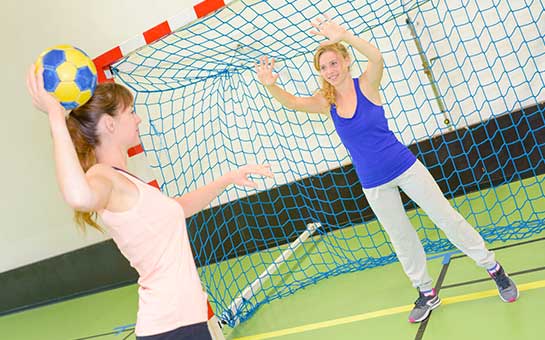Handball is a famous Olympic team sport. Modern handball is one of the world’s oldest sports, dating back to 11th-century Ireland. Initially, the sport was played using a hard leather-covered ball on courts. The court was about 80 feet long and 40 feet wide (or 24 meters by 12 meters). The modern sport can also be played in a walled court.
When visiting European countries, especially the Nordic countries, you might find yourself indulging in the sport. Injuries are associated with handball, especially when you haven’t practiced and don’t have the right technique. Buy handball travel insurance to mitigate the financial risks of expensive medical treatments.
Travel Insurance for Handball
When buying handball hazardous sports travel insurance keep these things in mind:
- Most standard travel insurance plans don’t include coverage for potentially hazardous sports like handball, so be sure the plan you purchase provides the level of coverage you need.
- If you have a reoccurring injury that is also common with handball, make sure your insurance plan provides coverage for it.
- Experts recommend buying travel health insurance for handball with hospitalization benefits.
Basics of Playing Handball
Olympic team handball is played on a standard court of 40-meter length and 20-meter width (about 130 feet by 65 feet). You can use only one hand (and no other part of the body) while striking the ball. It requires basic maneuvers like passing, throwing, dribbling, and striking to score points. The team on the defense is required to prevent goals by tackling the other team.
There is no special equipment or accessories required for handball—although, you may be required to wear soft leather gloves. This prevents any moisture on your hands from affecting the ball. A damp rubber ball can become slippery and hard to control.
Handball is a contact sport. It requires intense body contact, quick direction changes, and intermittent but frequent running. The physical aspect of the game is quite challenging for the body. There are also demands for one-on-one confrontations, challenging techniques, and coordination elements.
Speed, strength, and technique are the most crucial aspects of the game. While catching, throwing, dribbling, or passing, your body is under a lot of stress. The aggressive contact and agile movements required are responsible for a lot of injuries in handball. Muscles, bones, tendons, ligaments, and joints are always endangered while indulging in the sport.
Risks of Playing Handball
Handball has always been a high-impact sport. It combines speed, intensity, and force. This can result in a lot of injuries, as the body is under constant stress from quick movements and striking. When travelling to a foreign destination, it may be expensive to treat these injuries. Buy adventure sports travel insurance for handball and be ready for any such financial risks.
- Due to improper landings, ankle injuries have been reported among many players. The most common ankle injury is the sprained ankle.
- A kneecap (patella) can be dislocated due to the side impacts against the knee joint. However, this could also be more frequent in people with anatomical malalignments.
- Shoulder injuries like dislocated shoulders and throwing shoulder are also very common among handball players.
- Periostitis may occur due to muscle tightness and stress on the lower leg due to running.
